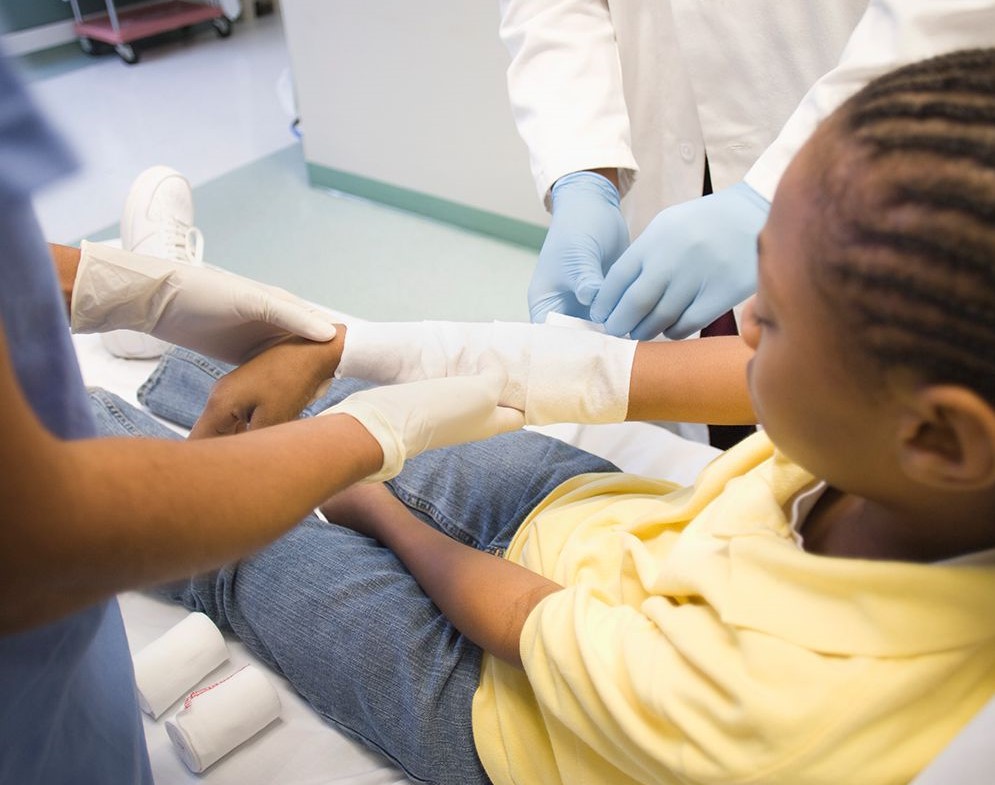
First Aid, Fractures (broken bones): find out what to look for and what to do
What are fractures? A break or crack in a bone is called a fracture. In the case of an open fracture, the broken bone may pierce the skin surface
But in a closed fracture the skin around the fracture is intact.
However, broken bones may be unstable causing internal bleeding and the casualty may develop shock.
Fractures, Signs and symptoms
Look for:
- deformity, swelling and bruising around the fracture
- pain and/or difficulty moving the area
- a limb may look shorter, twisted or bent
- a grating noise or feeling from the ends of the broken bones
- difficulty or being unable to move the limb normally
- a wound where you can see the bone sticking out (known as an open fracture)
- signs of shock, particularly with a fracture of a thigh bone, hip or pelvis.
What to do as first aid in fractures
If it is an open fracture, cover the wound with a sterile dressing or a clean non-fluffy cloth.
Apply pressure around the wound and not over the protruding bone, to control any bleeding.
Then secure the dressing with a bandage.
Advise the casualty to keep still while you support the injured part to stop it from moving.
Do this by holding the joint above and below the injured area.
Place padding around the injury for extra support.
Once you’ve done this, call Emergency Number for help.
Do not move the casualty until the injured part is secured, unless they are in immediate danger.
You can secure an upper limb fracture with a sling and a lower limb fracture with broad fold bandages.
If necessary treat for shock, but do not raise the legs if either are suspected to be broken or there is injury to the pelvis or a hip.
Monitior until help arrives.
Read Also:
Emergency Live Even More…Live: Download The New Free App Of Your Newspaper For IOS And Android
Treating Injuries: When Do I Need A Knee Brace?
Wrist Fracture: How To Recognise And Treat It
Carpal Tunnel Syndrome: Diagnosis And Treatment
Knee Ligament Rupture: Symptoms And Causes
Lateral Knee Pain? Could Be Iliotibial Band Syndrome
Knee Sprains And Meniscal Injuries: How To Treat Them?
Stress Fractures: Risk Factors And Symptoms
What Is OCD (Obsessive Compulsive Disorder)?
RICE Treatment For Soft Tissue Injuries
P.O.L.I.C.E. Vs R.I.C.E.: The Emergency Treatment For Acute Injuries
How And When To Use A Tourniquet: Instructions For Creating And Using A Tourniquet
Bone Callus And Pseudoarthrosis, When The Fracture Does Not Heal: Causes, Diagnosis And Treatment


